Thousands of White Papers Snow Down into a Living Room
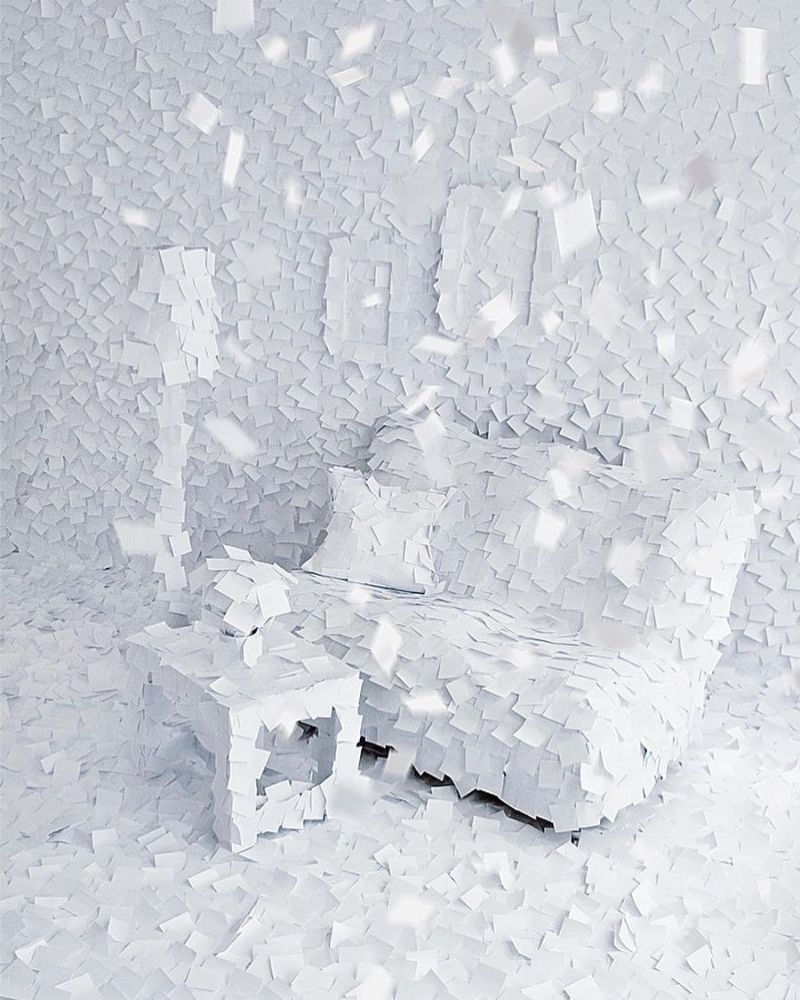
We often see fascinating photo shoots and awesome art installations but fail to take into account just how much work something like this can take to set up. First, though, enjoy these amazing images and then keep scrolling to see behind the scenes during the building process. The installation is called “Winter 1972,” and it was created by photographer and graphic artist Adrian Merz. A living room is completely transformed by thousands of white papers, making it look like it snowed indoors.
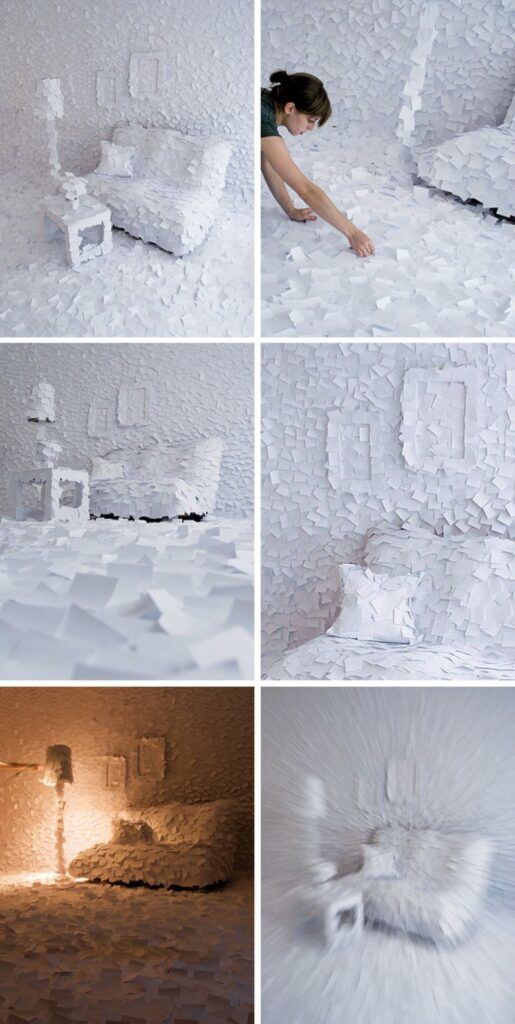
The photographer, once set up, experimented with all kinds of shots. After all, wouldn’t you too after decorating a room for this long with this many things? Plus, of course, who would be in a hurry to clean up after themselves after creating a mess of this magnitude?
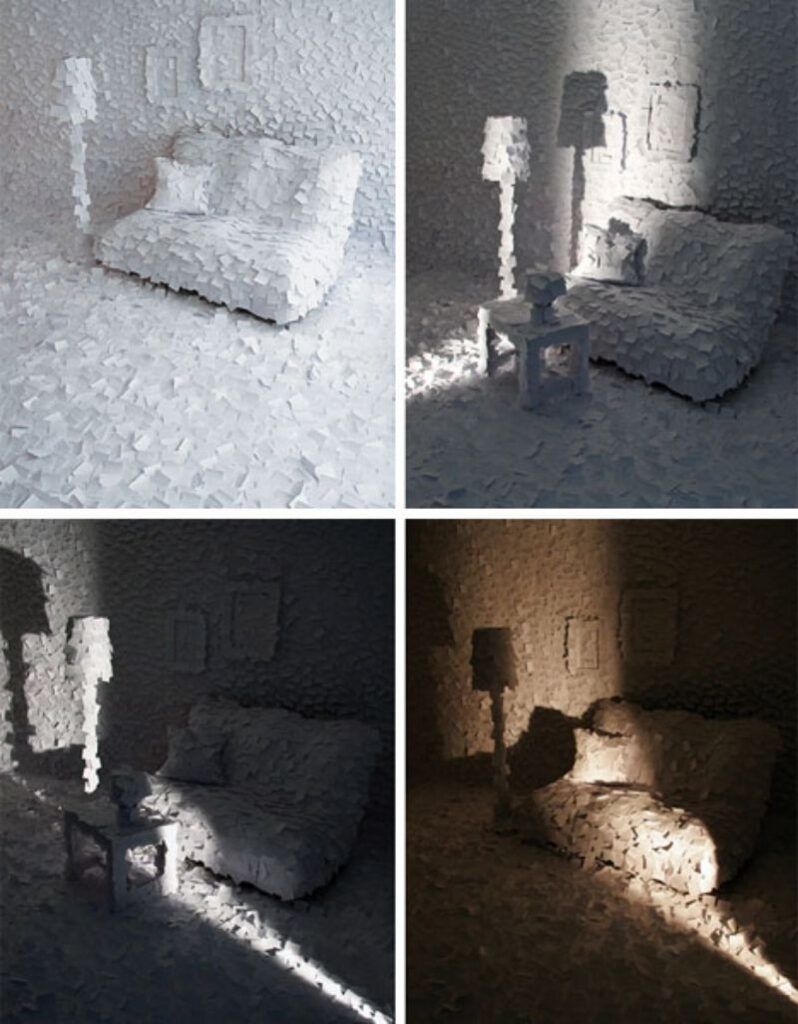
As well as experimenting with various general lighting schemes the artist also used some targeted light sources, shifting the mood from delightfully fantastic to eerie and mysterious. In short, the scene became a foil for all kinds of creative photographic experimentation.
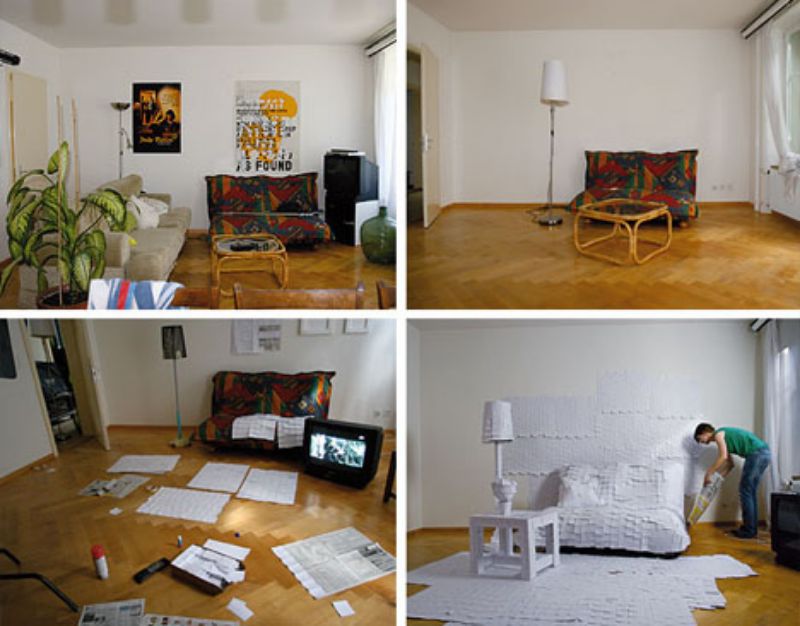
And now, the promised behind-the-scenes look. What was just an ordinary living room was, piece by piece, transformed into the set of this artistic photo shoot.
After placing the critical pieces of furniture to be covered in place, the build out process was slow and used a combination of prefab panels and added detail pieces to give it a sense of chaos.
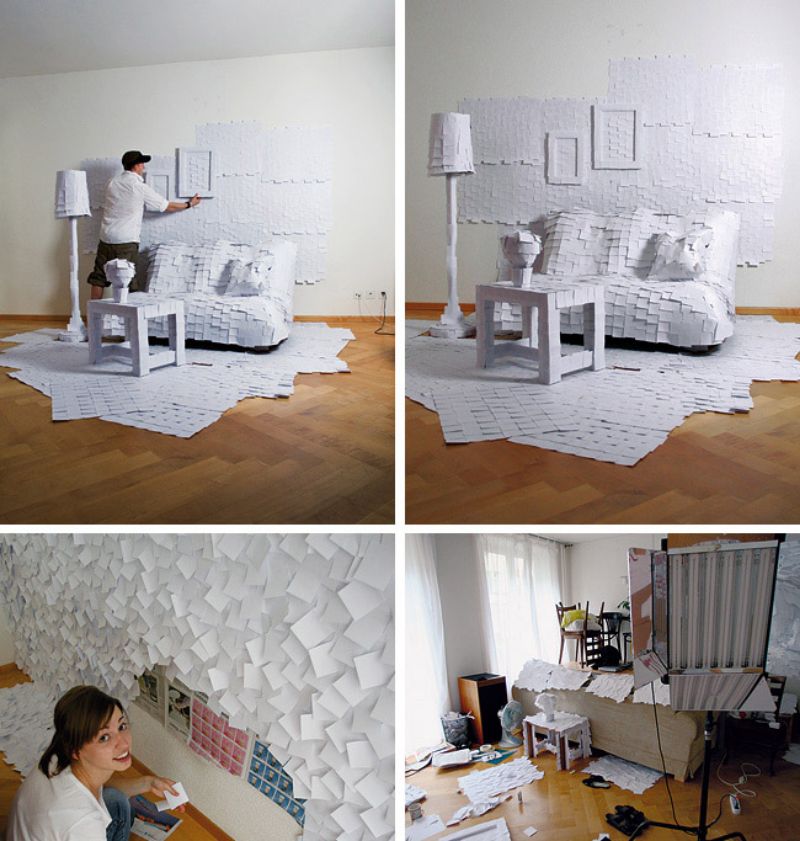
Once it was built out far enough and all possible angles were covered the lights were set up and the shoot commenced – after a good deal of hard hard work.
More from elephant.art: “When your to-do-list Post-Its take over your home office… This installation was part of a student project by Swiss creative director and graphic designer Adrian Merz, titled Winter 1972. It was inspired by the scent of the same name by New York perfumer Christopher Brosius, who attempted to translate his memories of the winter of 1972 into smell. For his take, Merz interviewed various participants in their living rooms to discover their recollections and stories from that winter, and wrote fragments of these discussions down on the back of the Post-Its before using them to cover a similar sitting room set-up.”